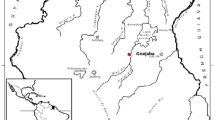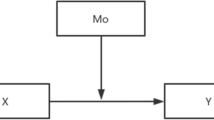Abstract
Introductıon/Aim
Defining the physical, psycho-social effects of body awareness may help to explain the functional effects. It was aimed to examine the relationship between the body awareness level and musculoskeletal pain complaints, physical activity level, and emotional state in healthy people.
Materials and methods
A total of 289 healthy individuals between the ages of 18 and 25 were included in the study. Body awareness level was using Body Awareness Questionnaire (BAQ), musculoskeletal pain complaint using The Nordic Musculoskeletal Questionnaire (NMQ), physical activity levels using International Physical Activity Questionnaire (IPAQ-short form) and emotional status using Beck Depression Inventory (BDI) were assessed.
Results
The mean age of the participants was 19.50 ± 1.55 years. The mean pain intensity was 2.48 ± 1.99. The BAQ score average was 91.87 ± 15.55. Thirty percent of the participants had a mild level and 14.9% had a moderate level of depression risk. While there was a weak positive relationship between the Disease Startup sub-dimension of BAQ and the moderate-level IPAQ score (r = 0.135, p = 0.022). Also there was a weak negative relationship between Disease Startup sub-dimension and the level of depression risk. A weak positive relationship was found between the changes in the body process and attention to subjects sub-dimension and the level of depression risk (r = 0.127, p = 0.030). There was a positive correlation between level of depression risk and pain intensity (r = 0.237, p = 0.000). Body awareness levels of individuals who had back pain in the last 1 month were higher than those who did not experience pain (p = 0.029).
Conclusion
The results of the study showed that physical activity positively affected body awareness level. The body awareness level was directly related to the pain associated with the musculoskeletal system and emotional state. There is a need more studies examining the relationship between body awareness and pain, physical activity and emotional status with subdimensions of the BAQ.
Similar content being viewed by others
References
Kesgin C, ve Topuzoğlu A, (2006) Definition of Health; Handle. İstanbul Kültür Universitesi 3:47–49
Price CJ, Thompson EA (2007) Measuring dimensions of body connection: body awareness and bodily dissociation. J Altern Complement Med 13(9):945–953
Mehling WE, Wrubel J, Daubenmier JJ, Price CJ, Kerr CE, Silow T et al (2011) Body awareness: a phenomenological inquiry into the common ground of mind-body therapies. PEHM 6(6):7–12
Mehling WE, Gopisetty V, Daubenmier J, Price CJ (2009) Body awareness: construct and self-report measures. PLoS ONE 4(5):e5614
Karaca S, Bayar B (2021) Turkısh version of body awareness questionnaire: validity and reliability study. Türk Fizyoterapi ve Rehabilitasyon Dergisi 32(1):44–50. https://doi.org/10.21653/tjpr.660186
Lööf H, Johansson U-B, Henriksson EW, Lindblad S, Bullington J (2014) Body awareness in persons diagnosed with rheumatoid arthritis. OHW 9(1):24670
Berlucchi G, Aglioti SM (2010) The body in the brain revisited. Exp Brain Res 200:25–35
Vatansever M (2018). The Investigation of the Relationship Between Body Awareness and Balance and Posture in Healthy İndividuals with Different Physical Activity Levels. Master Thesis, Ankara.
Proprioseptif (Derin duyu) (2017) Liberum montessoira akademia [Online] http://www.montessoriakademia.com/2017/01/08/proprioseptif-derin-duyu/. Accessed 18 Jan 2022.
Danner U, Avian A, Macheiner T, Salchinger B, Dalkner N, Fellendorf FT et al (2017) “ABC”—The awareness-body-chart: a new tool assessing body awareness. PLoS ONE 12(10):e0186597. https://doi.org/10.1371/journal.pone.0186597
Farb N, Daubenmier JJ, Price CJ, Gard T, Kerr C, Dunn B et al (2015) Interoception, contemplative practice and health. Front Psychol 6:763
Gül A, Üstündağ H, Kahraman B, Purisa S (2014) Evaluation of Musculoskeletal Pain among Nurses. Arch Health Sci Res 1(1):1–10
Cavlak U (2016) Kas iskelet sistemi ağrısı: multidisipliner yaklaşım. Birinci baskı. İstanbul Tıp Kitabevleri, İstanbul, pp 1–33
Erden A, Altuğ F, Cavlak U (2013) Investigation of the relationship between body awareness, pain, emotional status, and quality of life among healthy people. J Kartal TR 24(3):145–150
Gard G (2005) Body awareness therapy for patients with fibromyalgia and chronic pain. Disabil Rehabil 27(12):725–728
Kerem Günel M, Vardar Yağlı N, Akel BS, Erdoğanoğlu Y, Şener G (2014) Effect of body awareness therapy on fibromyalgia syndrome in women: a randomized controlled trial. JETR 1(2):43–48
Minev M, Petkova M, Petrova B, Strebkova R (2017) Body awareness and responses to experimentally induced pain. TJS 15(3):244–248
Price CJ, Mehling W (2016) Body awareness and pain chapter 16. In: Thompson D, Brooks M (eds) Integrative pain management. Handspring Publishing, Williston, pp 235–251
Haroon H, Mehmood S, Imtiaz F, Ali SA, Sarfraz M (2018) Musculoskeletal pain and its associated risk factors among medical students of a public sector university in Karachi Pakistan. J Pak Med Assoc 68(4):682–688
Shields SA, Mallory ME, Simon A (1989) The body awareness questionnaire reliability and validity. J Pers Assess 53:802–815
Jansen GB, Linder J, Ekholm KS, Ekholm J (2011) Differences in symptoms, functioning, and quality of life between women on long-term sick-leave with musculoskeletal pain with and without concomitant depression. J Multidiscip Health 4:281–292
De Jong M, Lazar SW, Hug K, Mehling WE, Hölzel BK, Sack AT, Peeters F, Ashih H, Mischoulon D, Gard T (2016) Effects of mindfulness-based cognitive therapy on body awareness in patients with chronic pain and comorbid depression. Front Psychol 7:967
Gyllensten AL (2001) Basic body awareness therapy. Lund University, Department of Physical Therapy, Lund, Sweden, Thesis
Kahraman T, Genç A, Göz E (2016) The Nordic musculoskeletal questionnaire: cross-cultural adaptation into Turkish assessing its psychometric properties. Disabil Rehabil 38(21):2153–2160
Sağlam M, Arıkan H, Savcı S, Inal-İnce D, Boşnak- Güçlü M, Karabulut E (2012) International physical activity questionnaire: reliability and validity of the Turkish version. Percept Mot Skills 111:278–284
Hisli N (1989) Use of the beck depression inventory with Turkish university students: reliability, validity and factor analysis. Turk J Psychol 7(23):3–13
http://spss.ktu.edu.tr/ [Accessed 11 Dec 2019]
Schober P, Boer C, Schwarte LA (2018) Correlation coefficients – appropriate use and interpretation. Anesth Analg 126(5):1763–1768
Daubenmier JJ (2005) The relationship of yoga, body awareness, and body responsiveness to self- objectification and disordered eating. Psychol Women Q 29(2):207–219
Price C (2006) Body-oriented therapy in sexual abuse recovery: a pilot-test comparison. JBMT 10(1):58–64
Hävermark AM, Langius-Eklöf A (2006) Long-term follow up of a physical therapy programme for patients with fibromyalgia syndrome. Scand J Caring Sci 20(3):315–322
Malmgren-Olsson EB, Armelius BA, Armelius K (2001) A comparative outcome study of body awareness therapy, Feldenkrais and conventional physiotherapy for patients with non-specific musculoskeletal disorders, changes in psychological symptoms, pain and self-image. Physiother Theory Pract 17:77–95
Kolt G, McConville J (2000) The effects of a Feldenkrais awareness through movement program on state anxiety. JBMT 4:216–220
Kalkışım ŞN, Çan MA, Erden A et al (2022) Relationships between anthropometric measurements, muscle strength and body awareness. Acta Neurol Belg 122:31–42. https://doi.org/10.1007/s13760-020-01578-x
Langevin HM (2021) Fascia mobility, proprioception, and myofascial pain. Life (Basel) 11(7):668. https://doi.org/10.3390/life11070668.PMID:34357040;PMCID:PMC8304470
Hasan MM, Yaqoob U, Ali SS, Siddiqui AA (2018) Frequency of musculoskeletal pain associated factor among undergraduate students. CRCM 7(2):131–145
Smith DR, Wei N, Ishitake T, Wang RS (2005) Musculoskeletal disorders among Chinese medical students. Kurume Med J 52:139–146
Gharib NM, Hamid NS (2013) Prevalence of mechanical neck pain in Taif university female students: a survey study. J Am Sci 9:347–354
Wu A, March L, Zheng X, Huang J, Wang X, Zhao J et al (2020) Global low back pain prevalence and years lived with disability from 1990 to 2017: estimates from the global burden of disease study 2017. Ann Transl Med. 6:299. https://doi.org/10.21037/atm.2020.02.175
Thiese MS, Hegmann KT, Wood EM, Garg A, Moore JS, Kapellusch J et al (2014) Prevalence of low back pain by anatomic location and intensity in an occupational population. BMC Musculoskelet Disord. https://doi.org/10.1186/1471-2474-15-283
Haase A, Steptoe A, Sallis JF, Wardle J (2004) Leisure-time physical activity in university students from 23 countries: associations with health beliefs, risk awareness, and national economic development. Prev Med 39:182–190
El Ansari W, Stock C, Phillips C, Mabhala A, Stoate M, Adetunji H et al (2011) Does the association between depressive symptomatology and physical activity depend on body image perception? A survey of students from seven universities in the UK. IJERPH 8(2):281–299
Erden A, Güner SG (2018) Impact of exercise on quality of life, body awareness, kinesiophobia and the risk of falling among young older adults. Cukurova Med J 43(4):941–950
Mehling WE, Gopisetty V, Daubenmier J, Price JC, Hecht FM, Stewart A (2011) Body awareness: a phenomenological inquiry into the common ground of mind-body therapies. Philos Ethics Hum Me 6(1):6
Danielsson L, Papoulias I, Petersson EL, Carlsson J, Waern M (2014) Exercise or basic body awareness therapy as add-on treatment for major depression: a controlled study. J Affect Disord 168:98–106
Penedo FJ, Dahn JR (2005) Exercise and well-being: a review of mental and physical health benefits associated with physical activity. Curr Opin Psychiatry 18(2):189–193
Ginzburg K, Biran I, Aryeh IG, Tsur N, Defrin R (2018) Pain perception and body awareness among individuals with borderline personality disorder. J Pers Disord 32(5):618–635. https://doi.org/10.1521/pedi_2017_31_316
Göğremiş M, Omaç Sönmez M (2018) The prevalence of musculoskeletal pain in teachers and the relationship among pain and emotional state, quality of life, and body awareness. SSTB İlkbahar Yaz Dönemi Sayı 27:43–60
Acknowledgements
The authors would like to thank the academic and administrative staff at Karadeniz Technical University Vocational School of Health Science.
Funding
This work was supported by Karadeniz Technical University Scientific Research Projects Coordination Unit (BAP-PhD, BAP06).
Author information
Authors and Affiliations
Contributions
All authors contributed to the study conception and design. Material preparation, data collection and analysis were performed by ŞNK, AE, ÖKU, CEÖ and NBZ, MAÇ. The first draft of the manuscript was written by ŞNK and all authors commented on previous versions of the manuscript. All authors read and approved the final manuscript.
Corresponding author
Ethics declarations
Conflict of interest
The authors declared no potential conflicts of interest with respect to the research, authorship, and/or publication of this article.
Ethics approval
Approval was obtained from the University Ethics Committee and the research was carried out in accordance with the declaration of Helsinki (protocol no.: 24237859–510; approval no.: 2017/155).
Additional information
Publisher's Note
Springer Nature remains neutral with regard to jurisdictional claims in published maps and institutional affiliations.
Rights and permissions
Springer Nature or its licensor holds exclusive rights to this article under a publishing agreement with the author(s) or other rightsholder(s); author self-archiving of the accepted manuscript version of this article is solely governed by the terms of such publishing agreement and applicable law.
About this article
Cite this article
Kalkışım, Ş., Erden, A., Kanber Uzun, Ö. et al. Relationship between body awareness level and musculoskeletal pain complaints, physical activity level and emotional status in healthy people. Acta Neurol Belg 123, 1789–1796 (2023). https://doi.org/10.1007/s13760-022-02056-2
Received:
Accepted:
Published:
Issue Date:
DOI: https://doi.org/10.1007/s13760-022-02056-2




